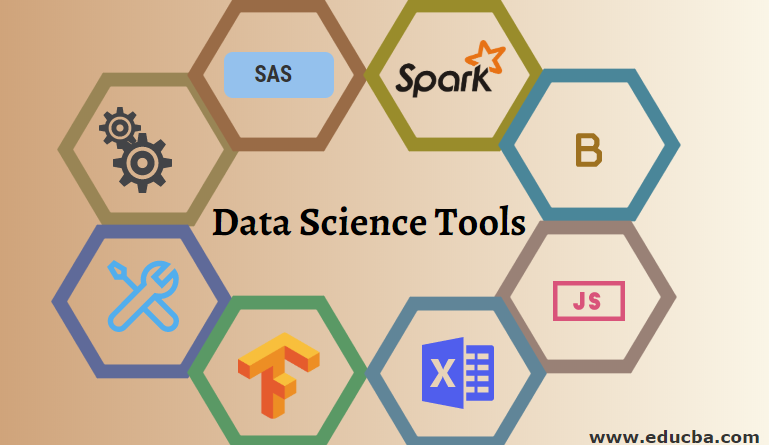Data Science Tools for Education
Teachers and lecturers are now realizing that data science tools can help make teaching methods much more enriching and outcome-centric for students. Data analytics, data visualization, and machine learning access allow educators to base decisions on evidence. These Data Science Tools for Education can offer more customized learning experiences to their students. Here are ten of the most popular data science tools that enable education professionals to apply data
1. Python
Different applications bring one of the programming languages, Python. Being an easy and versatile language, its applications have enormously increased and have enormous libraries.
In the context of data science, libraries for data manipulation, numerical operations, and visualization include pandas, NumPy, and Matplotlib. For more advanced machine learning tasks, scikit-learn and TensorFlow are commonly used. These libraries offer good readability, making them especially useful for education professionals introducing data science into the curriculum.
2. R
R is designed as a system for statistical computing and graphics. It is based on tremendous functions for statistical analysis, and this is because of powerful data visualization through libraries like ggplot2.
As such, it is used heavily in colleges and universities for research purposes. This thus puts it in the great utility for education professionals that seek to teach the concepts of statistics and methods of data analysis.
3. Jupyter Notebooks
An open-source web application that enables users to create and share documents that contain live code, equations, visualizations, and narrative text.
Jupyter is also flexible, supports more than 40 languages, and enables the development of both interactive data science and scientific computing. Using it, instructors can outline lessons that contain coding plus visualizations and explanations that would better match up with a complex understanding of concepts.
4. Tableau
An extremely powerful tool for data visualization that can easily convert raw data into more usable formats. Tableau provides a drag-and-drop interface that aids in the creation of interactive dashboards through real-time analysis of data.
Also, it makes it possible to represent large data sets in a very user-friendly manner, thus becoming an extremely popular product for educators who want to teach students data storytelling and visualization.
5. Microsoft Power BI
Microsoft Power BI is an enterprise business analytics service. It provides enterprises with real-time business intelligence. It also offers interactive visualizations.
Power BI has the advantage of convenient working with an easy-to-use interface. It connects to other data sources, enabling users to build detailed interactive reports.
It would be very helpful for education professionals who could institute digital transformation by applying institutional data, monitoring student performance, and gathering actionable insights.
6. Apache Spark
Apache Spark is an open-source unified analytics designed specifically for big data processing. Spark is fast and easy to use, thus able to support large complex analytics capabilities and large datasets.
It can be used to coach education professionals on the concept of big data processing and real-time analytics. These are major skills required in the job market.
7. RStudio
RStudio is the Integrated development environment for R. It has improved data visualization, statistical, and machine learning capabilities.
RStudio still offers reproducible research using R Markdown and has been an excellent tool for instructors who wish to have students learn best practices in data analysis and reporting.
8. RapidMiner
RapidMiner is a data science platform. It provides a comprehensive environment for data preparation, machine learning, deep learning, text mining, and predictive analytics.
With its drag-and-drop interface, RapidMiner doesn’t involve any coding; hence it is appropriate for users coming from diverse backgrounds of technical competency and contains full machine learning algorithms, so that the teacher will be able to focus on teaching data science instead of getting confounded with programming.
9. KNIME
KNIME is an Open Platform for data analytics, reporting, and integration. It has a graphical workflow interface and supports integration with many data sources.
Advanced analytics and machine learning capabilities make KNIME an excellent resource for teaching students in analytical skill improvement among educators.
10. Google Data Studio
Google Data Studio is a free product where data can easily be presented as informative, easy-to-read dashboards and reports, fully customisable in any form desired.
It easily integrates multiple sources of data, encourages real-time collaboration, and supports interactive visualizations. An educator uses it in an educational setting when teaching their students how to effectively present data and ensure reports are interesting.
Conclusion
Data science tools offer immense value to education professionals by improving various aspects of teaching like curriculum development and student performance analysis. Tools such as Python, R, and Tableau help in analyzing and visualizing data. Whereas platforms like Jupyter Notebooks support collaborative learning and experimentation.
With user-friendly tools like Excel and SPSS, educators can easily include data-driven insights into their daily practices. Teachers can utilize such resources to implement effective teaching strategies, personalize learning experiences, and ultimately improve educational outcomes for students.
Source: Data Science Tools for Education
https://www.analyticsinsight.net/data-science/top-data-science-tools-for-education-professionals

